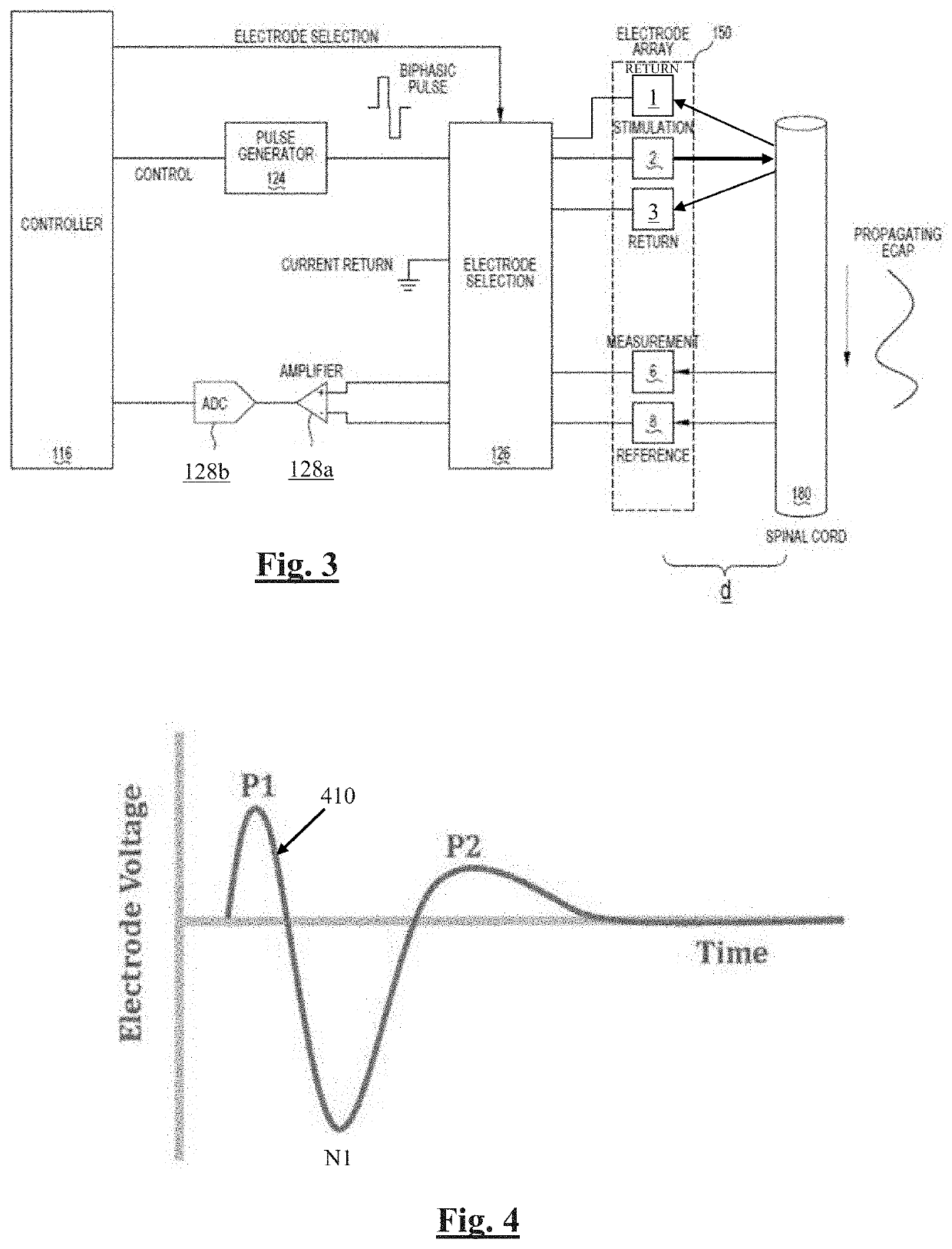Automated Neural Conduction Velocity Estimation
a neural conduction velocity and automatic technology, applied in the field of neural response to a stimulus, can solve the problems of monitoring, limiting the amount of data that can be obtained about the progression of the condition of interest, and being relatively expensive, so as to reduce and slow the neural conduction velocity
- Summary
- Abstract
- Description
- Claims
- Application Information
AI Technical Summary
Benefits of technology
Problems solved by technology
Method used
Image
Examples
Embodiment Construction
[0052]FIG. 1 schematically illustrates an implanted spinal cord stimulator 100. Stimulator 100 comprises an electronics module 110 implanted at a suitable location in the patient's lower abdominal area or posterior superior gluteal region, and an electrode assembly 150 implanted within the epidural space and connected to the module 110 by a suitable lead. Numerous aspects of operation of implanted neural device 100 are reconfigurable by an external control device 192. Moreover, implanted neural device 100 serves a data gathering role, with gathered data being communicated to external device 192 via any suitable transcutaneous communications channel 190.
[0053]FIG. 2 is a block diagram of the implanted neurostimulator 100. Module 110 contains a battery 112 and a telemetry module 114. In embodiments of the present invention, any suitable type of transcutaneous communication 190, such as infrared (IR), electromagnetic, capacitive and inductive transfer, may be used by telemetry module 1...
PUM
 Login to View More
Login to View More Abstract
Description
Claims
Application Information
 Login to View More
Login to View More - R&D
- Intellectual Property
- Life Sciences
- Materials
- Tech Scout
- Unparalleled Data Quality
- Higher Quality Content
- 60% Fewer Hallucinations
Browse by: Latest US Patents, China's latest patents, Technical Efficacy Thesaurus, Application Domain, Technology Topic, Popular Technical Reports.
© 2025 PatSnap. All rights reserved.Legal|Privacy policy|Modern Slavery Act Transparency Statement|Sitemap|About US| Contact US: help@patsnap.com



